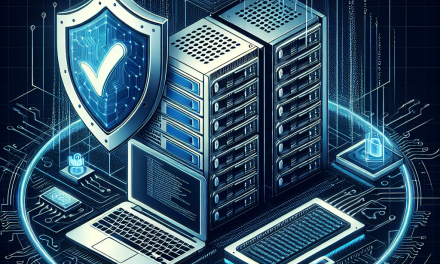In today’s hyper-connected world, the security of server management tools is paramount, especially for organizations leveraging Windows Admin Center (WAC) for managing their Windows Servers. Windows Admin Center is a powerful management tool that provides a centralized approach to manage servers, clusters, hyper-converged infrastructure, and Windows 10 PCs. However, with its capabilities also come potential security risks. In this article, we will discuss best practices for securing Windows Admin Center environments to protect your vital server infrastructure.
1. Implement Role-Based Access Control (RBAC)
Why It’s Important:
RBAC allows you to define precise permissions associated with different user roles. It limits access to only those resources and actions users need to perform their jobs, minimizing the risk of unauthorized access and potential damage.
Best Practice:
- Assign roles according to the principle of least privilege. Ensure that users and groups have only the permissions they need to perform their tasks.
- Regularly review user access and permissions to update them in line with changing roles or organizational structure.
2. Deploy Windows Admin Center in a Secure Network Environment
Why It’s Important:
WAC should be hosted in a secure, well-architected environment to prevent unauthorized access and attacks.
Best Practice:
- Use a dedicated management network separate from production servers to run WAC.
- Limit access to the WAC portal through VPN or by enforcing strict firewall rules to allow only specific IP addresses.
3. Enable HTTPS with Valid Certificates
Why It’s Important:
Securing the communication between clients and the Windows Admin Center with HTTPS helps protect sensitive data from eavesdropping and man-in-the-middle attacks.
Best Practice:
- Obtain a valid SSL/TLS certificate from a trusted Certification Authority (CA) and configure WAC to use HTTPS.
- Regularly update and renew certificates, and enforce strong cryptographic protocols.
4. Implement Strong Authentication Mechanisms
Why It’s Important:
Weak authentication can lead to unauthorized access, compromising the entire environment.
Best Practice:
- Enable Windows Hello for Business or integrate with active directory Federation Services (AD FS) for modern authentication options such as Multi-Factor Authentication (MFA).
- Consider using Azure Active Directory (AAD) for identity management, as it offers additional security features.
5. Keep Windows Admin Center Updated
Why It’s Important:
Regular updates provide security patches and improvements, ensuring that vulnerabilities are addressed promptly.
Best Practice:
- Set up a regular schedule for checking updates for Windows Admin Center and related components.
- Subscribe to the Microsoft Security Response Center (MSRC) advisories to stay informed about vulnerabilities and patches.
6. Monitor and Audit Activity Logs
Why It’s Important:
Monitoring and auditing logs can provide insights into unusual activities, potential security breaches, and help in compliance reporting.
Best Practice:
- Enable and regularly review audit logs in Windows Admin Center to monitor activities.
- Use additional tools such as Azure Sentinel or Windows Event Forwarding for central log management and real-time alerts for suspicious activities.
7. Disable Unnecessary Features and Extensions
Why It’s Important:
Unutilized features and extensions can introduce vulnerabilities that attackers may exploit.
Best Practice:
- Assess the features and extensions within WAC that are currently in use and remove any that are unnecessary.
- Only enable features that support your organization’s operational requirements.
8. Regular Backup and Recovery Planning
Why It’s Important:
In a situation where security is breached, or data loss occurs, having a solid backup and recovery plan is essential.
Best Practice:
- Implement a comprehensive backup solution that includes regular backups of server configurations managed via WAC.
- Test your recovery plan periodically to ensure you can quickly restore service if necessary.
Conclusion
Securing your Windows Admin Center environment is vital in maintaining the integrity and confidentiality of your server infrastructure. By implementing the best practices outlined above, you can significantly mitigate risks and help ensure a secure management environment. As technology continues to evolve, staying informed about new threats and security practices will empower administrators to safeguard their environments effectively. For more articles on maximizing your IT infrastructure’s security, stay tuned to WafaTech Blogs!





